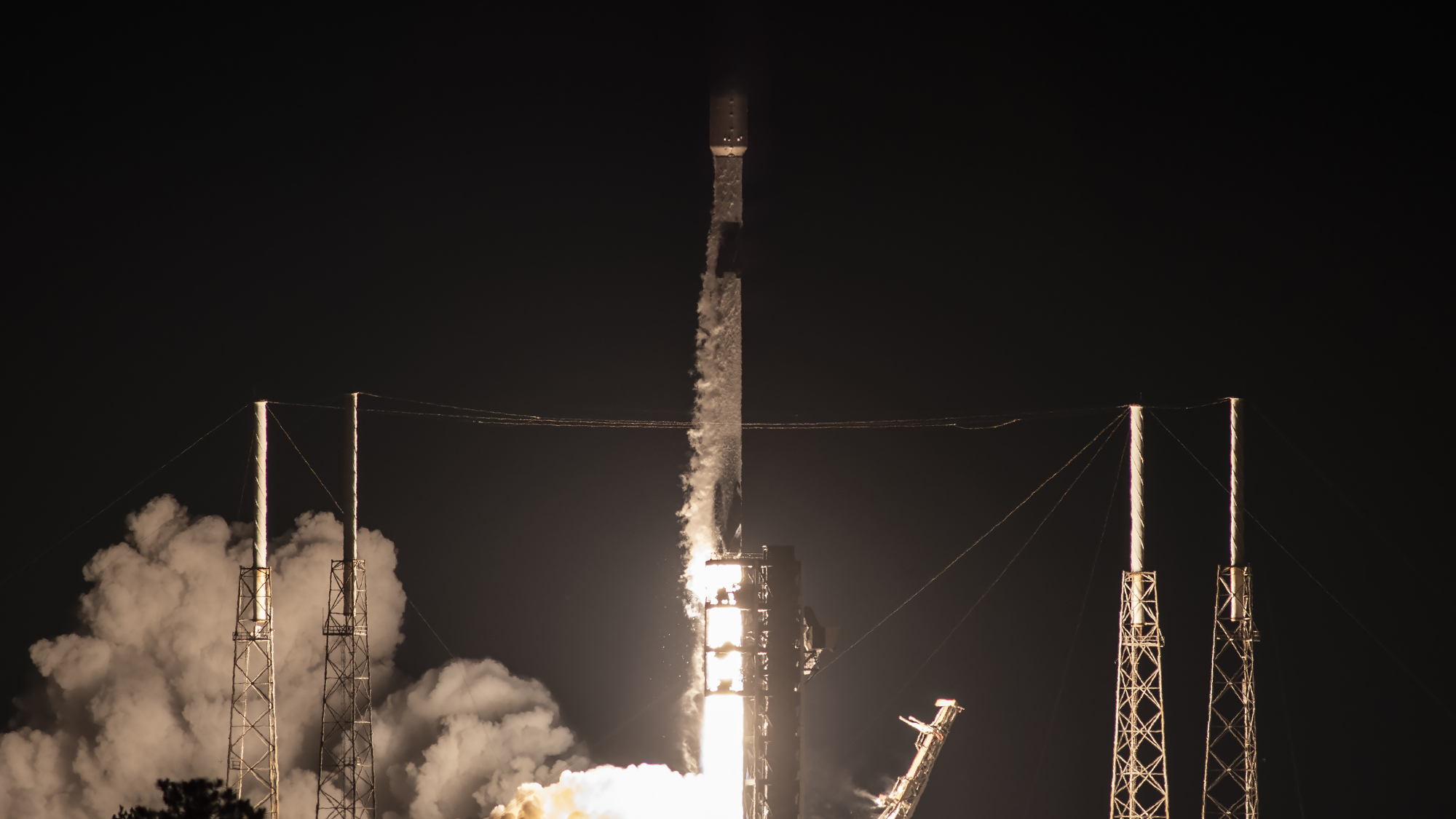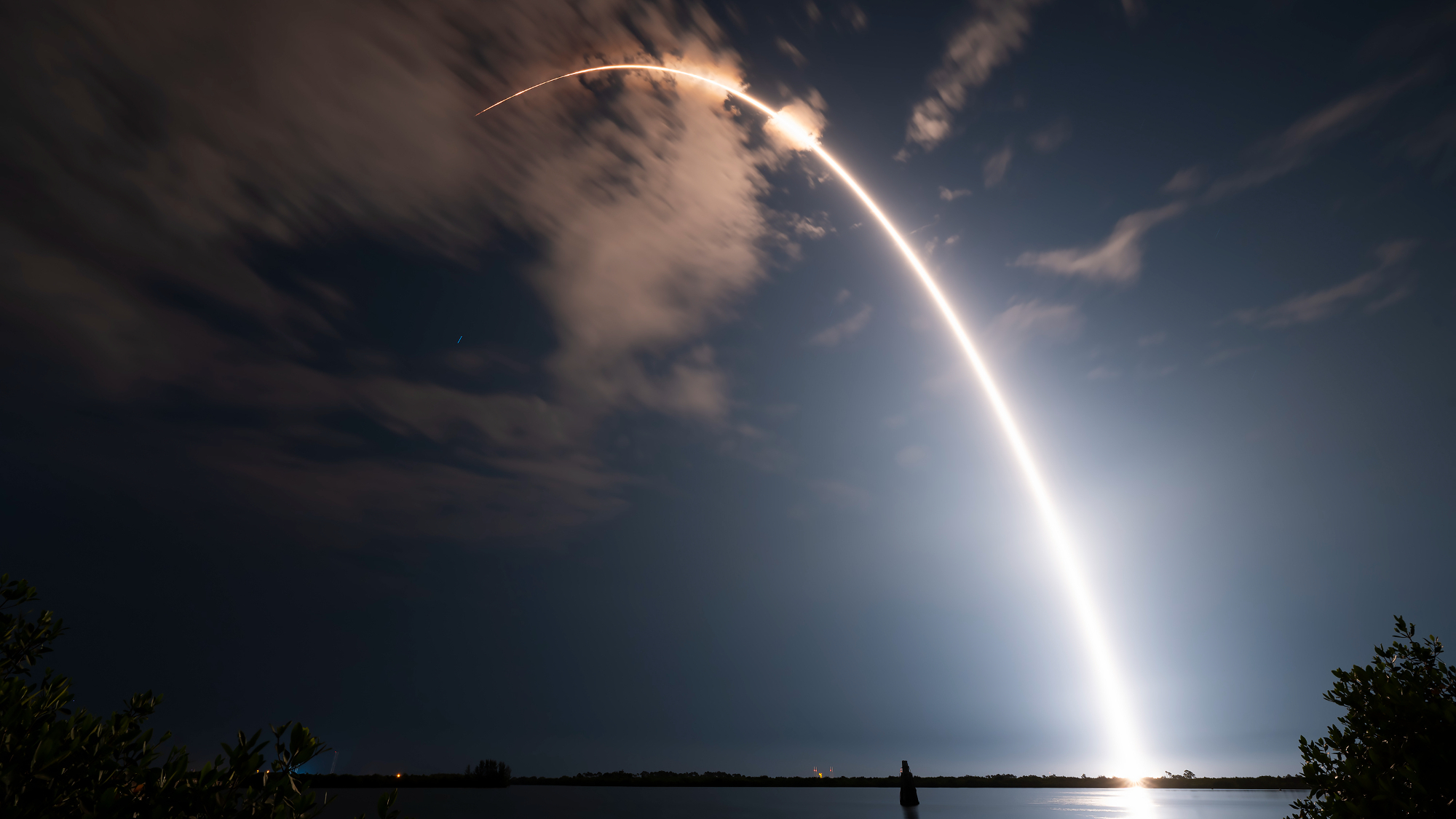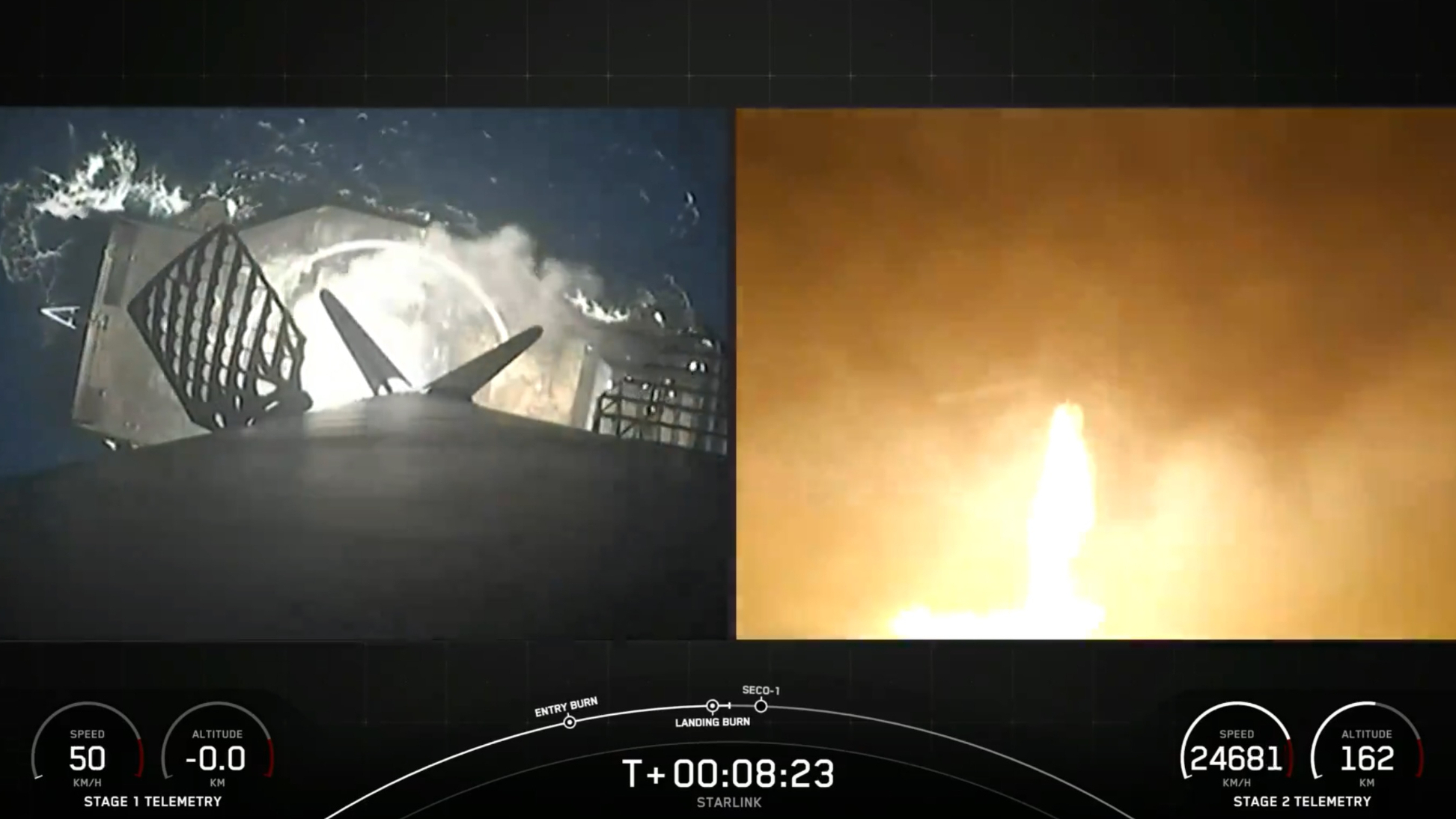SpaceX has now landed Falcon 9 rocket first stages a whopping 300 times.
The company hit that big round number on Friday night (June 7), during a launch of 22 Starlink broadband satellites from Cape Canaveral Space Force Station in Florida.
Liftoff occurred at 9:56 p.m. EDT (0156 GMT on June 8). About 8.5 minutes later, the first stage of the Falcon 9 returned to Earth as planned, landing vertically on the SpaceX droneship A Shortfall of Gravitas, which was stationed in the Atlantic Ocean.


"Falcon 9 lands for the 300th time," SpaceX wrote in a post on X that shared video of the milestone moment.
Related: Starlink satellite train: How to see and track it in the night sky
It was the 16th launch and landing for this particular booster, according to a SpaceX mission description. Twelve of those flights have been dedicated Starlink missions.
The Falcon 9's upper stage, meanwhile, continued carrying the 22 Starlink satellites to low Earth orbit, deploying them 52.5 minutes after liftoff.
Get the Space.com Newsletter
Breaking space news, the latest updates on rocket launches, skywatching events and more!

Tonight's launch was the 59th orbital mission of the year for SpaceX already. Forty-two of them have been dedicated to building out the company's Starlink megaconstellation, which currently consists of more than 6,000 functional satellites.
The above tally does not count launches of SpaceX's Starship megarocket, which has lifted off on two test flights so far this year. The most recent one occurred yesterday (June 6) and was a rousing success, as both stages of the huge vehicle splashed down in their planned ocean landing zones.
Editor's note: This story was updated at 11:45 p.m. EDT on June 7 with news of successful launch, rocket landing and satellite deployment.
Join our Space Forums to keep talking space on the latest missions, night sky and more! And if you have a news tip, correction or comment, let us know at: community@space.com.

Michael Wall is a Senior Space Writer with Space.com and joined the team in 2010. He primarily covers exoplanets, spaceflight and military space, but has been known to dabble in the space art beat. His book about the search for alien life, "Out There," was published on Nov. 13, 2018. Before becoming a science writer, Michael worked as a herpetologist and wildlife biologist. He has a Ph.D. in evolutionary biology from the University of Sydney, Australia, a bachelor's degree from the University of Arizona, and a graduate certificate in science writing from the University of California, Santa Cruz. To find out what his latest project is, you can follow Michael on Twitter.









